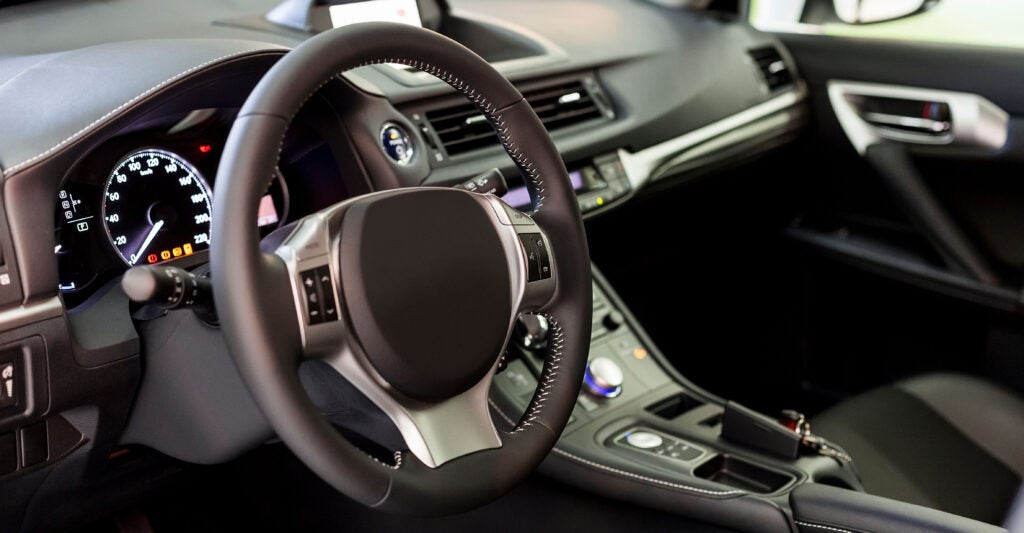Should your car decide whether you’re able to drive?
That’s not some hypothetical question. In the 2,700-plus pages of the 2021 infrastructure law—a clever misnomer for a trillion-dollar package which added leftist priorities to building bridges—a provision placed a surprising requirement on the National Highway Traffic Safety Administration.
The agency was tasked with developing a regulation that “requires passenger motor vehicles, manufactured after the effective date of that standard, to be equipped with advanced drunk- and impaired-driving prevention technology,” according to the agency’s website. The traffic safety agency was supposed to either have the rule set within three years (Hi, 2024!) after the bill’s passage or provide an explanation as to why such a standard hadn’t been created.
So, in late December, the agency moved forward, publishing a proposed rule in the Federal Register. Polly Trottenberg, deputy secretary of the Transportation Department, called it a “first step toward a new safety standard requiring alcohol-impaired-driving prevention technology in new passenger vehicles.”
On its face, that standard sounds great, right? After all, over 13,000 Americans were tragically killed in drunk driving accidents in 2021, the latest year for which data is available.
But it’s not so simple.
Of course, no American should drive drunk—and I say that as someone who was fortunate enough to survive as a two-year-old, along with my mother and infant brother, a horrific car accident caused by a drunk driver. There’s no excuse for putting other innocent people’s lives at risk because it’s inconvenient to stay the night somewhere or spend the money on alternative transportation.
But is the solution really making our cars equipped to make the decision about whether we can drive and have the car act as the enforcer?
As Rep. Thomas Massie put it during a December hearing, “The false positives would far outweigh the advantages.”
“You have a mother who swerves to miss wildlife and then goes around a pothole, then pulls over for an ambulance, and the dashboard is the juror and the executioner, and says get over to the side of the road with your kids and wait there,” the Kentucky Republican added, presumably alluding to a scenario where the swerves necessitated to save lives would suggest to an automated machine that the driver may be drunk.
Even the National Highway Traffic Safety Administration’s acting administrator at the time, Ann Carlson, acknowledged the issues with flawed technology, telling Reuters that given the roughly 1 billion car trips in a day in the U.S., “If it’s 99.9% accurate, you could have a million false positives.”
“Those false positives could be somebody trying to get to the hospital for an emergency,” she added.
She’s right to be concerned.
Aside from valid concerns about the ability of the technology to reach 100% accuracy, there are also other worrisome factors. How much would it cost auto manufacturers to add such technology to all new vehicles sold? And would the increase in the price of cars discourage Americans from buying newer cars, leaving them more prone to accidents in their older vehicles?
Cars are already exorbitantly expensive. In April 2013, the average new car was around $31,000, per Kelley Blue Book. Now, it’s nearly $49,000. As Americans struggle to make ends meet in rough economic conditions, should the federal government really be considering onerous mandates that would increase cars’ cost and discourage the purchase of new, safer ones, especially when it’s uncertain how much of a positive effect such mandates will have?
There’s also real, and fair, concerns about whether this technology could be exploited. If it relies on cameras, as does one such technology being considered, does that camera retain the footage? Does anyone besides the car’s owner have the footage? What if a car is stolen—do the thieves not just have a car, but also data about a person’s habits and behavior from video footage?
Furthermore, if we allow cars to not run to prevent impaired driving, is this a slippery slope? Will speeding and other signs of more aggressive driving—such as braking hard and changing lanes often—also be deemed qualities that should shut down a car? How far are we willing to go for safety?
Right now, the National Highway Traffic Safety Administration is seeking comments, and you can leave one here.
It’s already the law not to drive drunk. If you value the ability right now that it’s not your car’s job to enforce the law, just be aware that might become yet another relic of the good old days.
Have an opinion about this article? To sound off, please email letters@DailySignal.com, and we’ll consider publishing your edited remarks in our regular “We Hear You” feature. Remember to include the URL or headline of the article plus your name and town and/or state.
